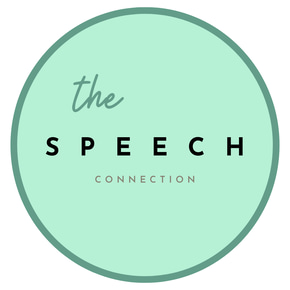Frequently Asked Questions
'What is speech and language therapy?'
Speech and language therapy is an allied health profession, which specialises in supporting children and adults overcome communication difficulties.
Intervention involves the assessment, diagnosis, and treatment of a wide range of speech and language disorders, including speech, language, and communication challenges across the life span.
Speech and language therapists typically (but don't always) specialise in either working with children or with adults. As a paediatric therapist, I work soley with children and their families.
I specialise in the areas of speech sound disorders (SSD) and in using relationship-based therapy to support a child's interaction, language and communication development.


‘How much speech and language therapy will my child need?’
The amount of speech and language intervention your child will need depends on several factors, including the nature and severity of their communication difficulties, their response to therapy, and how they respond to feedback and support.
I assess each child's needs individually and develop a personalised therapy plan tailored to address their specific challenges and goals. The frequency and duration of therapy sessions will vary based on these factors.
Some children may require only a few sessions to address minor speech or language concerns, while others with more significant challenges may benefit from ongoing therapy over an extended period.
Consistency and practice outside of therapy sessions are crucial to your child's progress. I will provide activities and exercises to do at home to support your child's communication development between sessions. For children with speech sound disorders in particular, the amount of practice parents carry out at home can significantly impact their progress in therapy. Therefore, it's important to consider not only the financial commitment but also the time and emotional investment required for therapy.
Beginning intervention at a point of time that works best for your child, you, and your family is essential for the best communication outcomes for your child.


'Why does my child have speech or language difficulties?'
Experiencing speech and language difficulties as a child is not uncommon. Around 8-10% of children will face delays, difficulties, or disorders as they learn new words, speech sounds, and how to engage with others around them.
In some cases, there is a clearly identifiable cause for these difficulties, such as cleft lip or a hearing impairment. However, for many children, the causes of communication challenges are more complex, involving a mix of genetic, environmental, and neurological factors that we’re still working to fully understand.
What we do know is:
The different types of communication difficulties and how to diagnose them.
There is a range of interventions available to support these challenges.
Timely intervention is crucial. It's important to intervene early, in order to reduce the negative impact a speech, language, or communication difficulty may have on a child's confidence, literacy, learning, and social interactions.
While parents and teachers are not the cause of these difficulties, they play a crucial role in supporting children to maximise their communication development. We have a wealth of strategies and evidence showing how you can make adaptations to help.


'What is Childhood Apraxia of Speech?'
Childhood Apraxia of Speech (CAS) is a motor speech disorder in which children have difficulty planning and coordinating the precise movements required for speech. This challenge goes beyond mispronunciation; the brain struggles to efficiently send the correct signals to the muscles involved in speaking.
While CAS is relatively rare, effective treatments are available to help children develop clear and accurate speech. Early identification by a speech and language therapist experienced in diagnosing and treating motor speech disorders, such as myself, is essential. This ensures that your child receives the most effective, evidence-based therapy. Unlike approaches used for phonological disorders, CAS therapy focuses on the principles of motor learning, which involve repetitive practice, feedback, and gradually increasing the complexity of speech tasks.
If you suspect your child may have CAS and would like to learn more about assessment and intervention, please feel free to get in touch. For more information on speech sound disorders in general, you can access the Speech Sound Disorders public information by the Royal College of Speech and Language Therapists (RCSLT).


Have a question? Start by getting in touch:
The Speech Connection Clinic
Get connected



Suite 9, Royal Quays Community Centre, NE29 6XB
